Tuesday, March 19th 2019

Google Announces Stadia Cloud Gaming Service at GDC 2019
We knew this was coming, especially after Google's teaser from earlier this month. Project Stream was a proof-of-concept in collaboration with Ubisoft, to see whether AAA gaming was possible over the internet. Things were smooth most of the time in our own experience, but there remained questions over how the concept would translate over to a finished product, especially with infrastructure challenges on the client side of things. Google's keynote at GDC just wrapped up, and the main focus was Stadia- the now named cloud gaming service borne out of Project Stream.
Stadia is built with instant access in mind. An example demo came in the form of Ubisoft's Assassin's Creed Odyssey, which was used in the public test before. It is integrated with partner YouTube channels such that a trailer for a supported game would have an option to play said game, which would then launch immediately. Stadia is built with support from a wide partner network including AMD, Unity, id Software, and more, with details seen past the break.Game streaming usually means support for multiple devices, given the backend hosts the actual game processing itself. Stadia is no different, with support for a variety for products including PCs, phones, tablet, and TVs (smart or otherwise via products such as Google's Chromecast). The current limitation is support for Google's Chrome browser, although Google mentioned that they are working to support other browsers as well. Most controllers as well as the keyboard + mouse combination, and Google is also bringing out a dedicated Stadia controller for those who prefer first-party support. The Stadia controller will come in three color options, is reminiscent of the XBOX controller, and connects via WiFi directly to the game being streamed. It also has a dedicated capture button to share content on YouTube, as well as a Google Assistant button to access the built-in mic for, well, Google Assistant.The backend is no doubt critical here, with Google promising over 7500 nodes around the world to combat latency as best as possible. Each node, or Stadia instance as they are calling it, uses datacenters comprising multiple racks filled with custom hardware developed in collaboration with AMD. The hardware includes a GPU providing 10.7 TFlops compute (based on AMD's Vega microarchitecture, presumably), a custom x86 processor clocked at 2.7 GHz with hyperthreading, and 16 GB of RAM, which all pair together to provide a single node well more powerful than the Sony PS4 Pro or the Microsoft XBOX One X- even combined. But raw numbers mean little if developers can't optimize for it, however, and this will no doubt be a challenge.Google is promising a massive improvement in gameplay experience with Stadia, going from the up to 1080p/60 FPS/stereo sound setup from Project Stream to 4K/60 FPS/HDR/surround sound at launch with Stadia, and further improvements targeting 8K gameplay in the future. This is paired with instant streaming of games so you can show viewers what you are playing, and others can watch you live. This enables YouTube to be a bigger competitor to Twitch than it currently is, and no doubt another move in Google's arsenal to take over the internet.AMD is one of many, many partners Google is working with to make Stadia a success, with other partners brought up on stage to talk about what else is coming out. Doom Eternal, for example, is ready for Stadia and capable of hitting the launch specifications of 4K HDR at 60 FPS. Unity and Unreal game engines are getting native support, and there are others listed as seen below. Google Assistant can come in handy here too, for seamless integration to figure out a game navigation problem, for example, as demonstrated with Shadow of the Tomb Raider.Google is promising full parental control for those who need it, but also full cross-platform play and multi-player. No cheating is a definite plus point in this case, given the whole concept of game streaming. Game developers will have tools available to enable a wide range of view options for multi-player gameplay, demonstrated by Google's Night Forest demo, and also the ability to easily style games using palettes and art backgrounds. Google is also creating a new Stadia Games and Entertainment division to build experiences and work with developers and partners to ensure a continuous stream of content.Stadia launches in 2019 in the US, Canada, UK, and Europe, but there are no more details available yet on pricing, launch date, and the content available at launch. Google promises to have another session in the summer to share these details, which gives time for people to make up their mind on whether Stadia is for them or not. The US especially has datacaps on most internet plans, and this is before input lag and gameplay latency comes into play. Summer 2019 is also when E3 happens, which has been nerfed this year by the absence of Sony and EA. This year is also especially important given many are expecting to hear more about the next generation of game consoles, so Stadia will be an alternative to many who simply want to play without dealing more into the logistics of it. There are also other such game streaming options coming out or already available in one form or another- be it NVIDIA's GeForce Now, Steam Link Anywhere, Microsoft's Wireless Display app, or others.
Let us know in the comments what you think, and keep in mind that it is early to make a conclusion one way or another on Stadia at this stage- especially without more details on pricing and content.
Stadia is built with instant access in mind. An example demo came in the form of Ubisoft's Assassin's Creed Odyssey, which was used in the public test before. It is integrated with partner YouTube channels such that a trailer for a supported game would have an option to play said game, which would then launch immediately. Stadia is built with support from a wide partner network including AMD, Unity, id Software, and more, with details seen past the break.Game streaming usually means support for multiple devices, given the backend hosts the actual game processing itself. Stadia is no different, with support for a variety for products including PCs, phones, tablet, and TVs (smart or otherwise via products such as Google's Chromecast). The current limitation is support for Google's Chrome browser, although Google mentioned that they are working to support other browsers as well. Most controllers as well as the keyboard + mouse combination, and Google is also bringing out a dedicated Stadia controller for those who prefer first-party support. The Stadia controller will come in three color options, is reminiscent of the XBOX controller, and connects via WiFi directly to the game being streamed. It also has a dedicated capture button to share content on YouTube, as well as a Google Assistant button to access the built-in mic for, well, Google Assistant.The backend is no doubt critical here, with Google promising over 7500 nodes around the world to combat latency as best as possible. Each node, or Stadia instance as they are calling it, uses datacenters comprising multiple racks filled with custom hardware developed in collaboration with AMD. The hardware includes a GPU providing 10.7 TFlops compute (based on AMD's Vega microarchitecture, presumably), a custom x86 processor clocked at 2.7 GHz with hyperthreading, and 16 GB of RAM, which all pair together to provide a single node well more powerful than the Sony PS4 Pro or the Microsoft XBOX One X- even combined. But raw numbers mean little if developers can't optimize for it, however, and this will no doubt be a challenge.Google is promising a massive improvement in gameplay experience with Stadia, going from the up to 1080p/60 FPS/stereo sound setup from Project Stream to 4K/60 FPS/HDR/surround sound at launch with Stadia, and further improvements targeting 8K gameplay in the future. This is paired with instant streaming of games so you can show viewers what you are playing, and others can watch you live. This enables YouTube to be a bigger competitor to Twitch than it currently is, and no doubt another move in Google's arsenal to take over the internet.AMD is one of many, many partners Google is working with to make Stadia a success, with other partners brought up on stage to talk about what else is coming out. Doom Eternal, for example, is ready for Stadia and capable of hitting the launch specifications of 4K HDR at 60 FPS. Unity and Unreal game engines are getting native support, and there are others listed as seen below. Google Assistant can come in handy here too, for seamless integration to figure out a game navigation problem, for example, as demonstrated with Shadow of the Tomb Raider.Google is promising full parental control for those who need it, but also full cross-platform play and multi-player. No cheating is a definite plus point in this case, given the whole concept of game streaming. Game developers will have tools available to enable a wide range of view options for multi-player gameplay, demonstrated by Google's Night Forest demo, and also the ability to easily style games using palettes and art backgrounds. Google is also creating a new Stadia Games and Entertainment division to build experiences and work with developers and partners to ensure a continuous stream of content.Stadia launches in 2019 in the US, Canada, UK, and Europe, but there are no more details available yet on pricing, launch date, and the content available at launch. Google promises to have another session in the summer to share these details, which gives time for people to make up their mind on whether Stadia is for them or not. The US especially has datacaps on most internet plans, and this is before input lag and gameplay latency comes into play. Summer 2019 is also when E3 happens, which has been nerfed this year by the absence of Sony and EA. This year is also especially important given many are expecting to hear more about the next generation of game consoles, so Stadia will be an alternative to many who simply want to play without dealing more into the logistics of it. There are also other such game streaming options coming out or already available in one form or another- be it NVIDIA's GeForce Now, Steam Link Anywhere, Microsoft's Wireless Display app, or others.
Let us know in the comments what you think, and keep in mind that it is early to make a conclusion one way or another on Stadia at this stage- especially without more details on pricing and content.




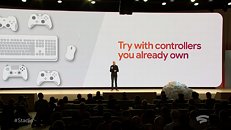
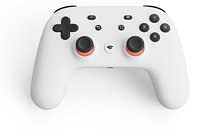

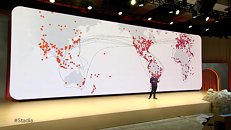
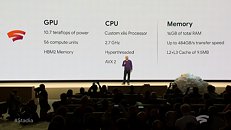
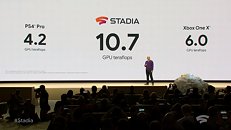
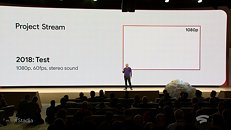


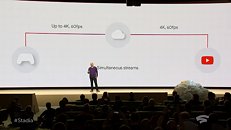
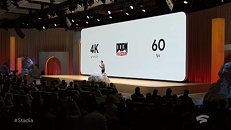





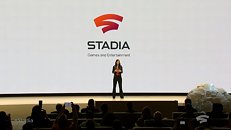
30 Comments on Google Announces Stadia Cloud Gaming Service at GDC 2019
tbf i prefer having my games on my computer, specially those who are mod'able ... and for various other reasons, streaming locally on the other hand is ok for me...
although i get the point of having game streamed for those who don't have or want capable computer, and just want to game occasionally.
Every ingame cutscene gonna be interrupted with an Ad?
Not to mentions Mods?... Paid Mods 3.0?...
It's a big win for AMD IMO, just think about it- all current consoles using AMD GPU/CPU and same will be with next new Consoles + Google now joining with Stadia + Microsoft also, what does it mean about future Game development and optimization for AMD hardware?
And it's not. Streaming services will compete with consoles. AMD provides hardware for both, so they simply secured their position.
And the CPU is a Xeon.It's quite likely this will be VERY expensive for active gamers (but quite acceptable for the casual kind).
I don't think any ads will be needed.No mods. No one cares.
This thing is what they do. They have the infrastructure, they have the know how. They've been providing cloud computing services for a while. And they still do with Stadia - they simply installed a game for you. Not a big deal.
Parsec, a relatively tiny company, has been offering a very similar service for a while. They don't have the infrastructure, so they use AWS.
And yeah... Google also provides you with an ugly Chinese pad that looks quite cheap. I hope it's not mandatory. I'm really looking forward to this, but I'd rather use my Xbox pads.
Folks with data caps that spend lots of time gaming, not to mention streaming music and videos, won't be able to sustain streaming a video game for very long without hitting or exceeding their data cap.
Between the wife, my 10 year old, 6 year old and myself, we generally average around 650GB a month (more less, depending on the time of year). I don't download games very often - still working on the ones I have installed - so I wouldn't have much wiggle room here to stream a game. If you figure a open-world type game, such as the Assassin Creed games, you can sink countless hours into it. The last AC game I played I easily put 40 hours into it over the course of a month or so.
Folks reporting, according to the past test review on Google's Cloud Streaming here on TPU, upwards of 6-7GB/hour.....that's just brutal! If I were to then spend 40 hours in a month on a AC game, that means I'd probably hit anywhere from 240 to 280GB just for one game.
1 game like that a month could easily push my household to the 1TB datacap on Comcast or past. For a lot of people with datacaps, something like this just isn't feasible anytime soon.
And no offense... if you're playing games for 40h a month, you're not the target audience of this service.Do people in US really have limited cable networks? I though this is not happening anymore.
But people will still do it like they still google stuff even if the results are altered some time greatly to meet their way of thinking.
DuckDuckGo FTW
Limits are another issue, but who knows - maybe game streaming will be excluded? Or you'll be able to buy an unlimited plan for gaming?
I'm in T-mobile in Poland. I pay $10/month for the phone plan.
4G is limited to 10GB (if I go over, transfer drops to 1Mbps).
But for ~$4 I can have 1080p video streaming excluded from this limit (the list includes Youtube, Netflix, Prime Video, Google Play and the top local services as well).
Globally, this is still going to be a niche service compared to things like Youtube, Netflix or even Spotify.
The US, the land of the free*
*as long as you’re a massive corporation.
But what about CPU?
If it is Intel, why even bother mentioning AVX, if it is AMD, why did its CEO only mention GPUs?